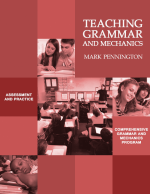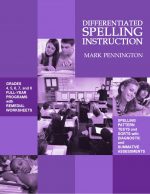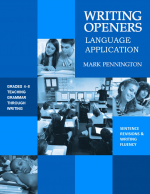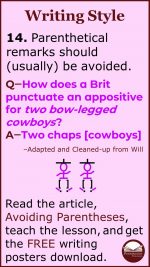ELA Language Anchor Standards | Curriculum Maps
If you and your grade-level team and/or department are committed to teaching the ELA Language Anchor Standards (the CCSS Anchor Standards for Language), these resources are for you!
Download these FREE full-year detailed grades 4, 5, 6, 7, and 8 curriculum maps to break down the grade-level CCSS Language Strand Standards into a specific instructional scope and sequence that is realistic and do-able for the entire school year. The 28 instructional weeks provide a rigorous pacing guide with additional time for beginning of the year diagnostic assessments, midterm and final exams, and standardized testing blocks.
These maps indicate which grammar, usage, and mechanics lessons to teach in the order that most teachers agree makes sense. The spelling components are organized by conventional spelling rules and developmental spelling patterns. The vocabulary section lists includes the following: Multiple Meaning Words and Context Clues (L.4.a.); Greek and Latin Word Parts (L.4.a.); Language Resources (L.4.c.d.); Figures of Speech (L.5.a.); Word Relationships (L.5.b.); Connotations (L.5.c.); and Academic Language Words (L.6.0) derived from the research-based Academic Words List.
This FREE download includes all grade-level L. 1,2 grammar, usage, mechanics (language conventions), L. 2 spelling, L. 3 knowledge of language, and L. 4, 5, 6 vocabulary Common Core State Standards.
The curriculum maps are included in the author, Mark Pennington’s standards and assessment-based programs. These programs help you teach each of the Language Anchor Standards with diagnostic, formative, and summative (unit) assessments to ensure that your students have mastered the standards. Plus, remedial worksheets provide the extra practice some of your students need to catch up while they keep up with grade-level standards. Read through the product descriptions before downloading your grade-level ELA Language Anchor Standards Curriculum Map at the end of the article.
Grammar, Usage, Mechanics (L.1,2)
Pennington Publishing provides traditional grades 4, 5, 6, 7, 8, and high school programs, including interactive instruction, practice, simple sentence diagrams, mentor texts, writing application, formative assessments, and biweekly unit tests. Diagnostic assessments help pinpoint remedial CCSS Standards deficits, and students are assigned targeted worksheets, each with a formative assessment, correspond to all test items.
Additionally, Pennington Publishing sells grade-level and remedial grammar, usage, and mechanics literacy centers (stations) and multi-level grades 4−8 interactive grammar, usage, and mechanics notebooks.
Spelling (L.2)
The Differentiated Spelling Instruction grades 4, 5, 6, 7, and 8 programs offer grade-level spelling instruction built upon the conventional spelling rules and developmental spelling patterns. Each lesson includes a 20-word spelling test and spelling patterns sort (all word provided). After 7 weeks of instruction, students take a summative assessment. The diagnostic spelling assessment includes all previous grade-level spelling patterns, and corresponding worksheets (each with a formative assessment) target each test item.
Reading, Writing, Listening, and Speaking (L.3)
The Writing Application Openers grades 4, 5, 6, 7, and 8 programs provide 56 whole-class, twice-per-week “quick writes,” designed to help students learn, practice, and apply grade-level grammar, usage, mechanics, sentence structure, and sentence variety standards. Teaching Grammar and Mechanics High School includes these openers, as well.
Vocabulary Acquisition and Use (L.4,5,6)
The Common Core Vocabulary Toolkit grades 4, 5, 6, 7, and 8 programs include 56 vocabulary worksheets to help students master each standard: multiple meaning words, Greek and Latin word parts, language resources (dictionary/thesaurus), figures of speech, word relationships, connotations, and academic language words (chosen from the research-based Academic Words List. Each lesson has vocabulary study cards and review games. Biweekly tests require students to define and apply the words in the writing context. Syllable and context clues vocabulary worksheets add depth to these grade-level programs.
BUNDLES
Pennington Publishing offers comprehensive grades 4, 5, 6, 7, and 8 Grammar, Mechanics, Spelling, and Vocabulary BUNDLES to teach each of the Common Core Anchor Standards for Language.
Get the Grade 4 Curriculum Map Anchor Standards for Language FREE Resource:
![]()
Get the Grade 5 Curriculum Map Anchor Standards for Language FREE Resource:
![]()
Get the Grade 6 Curriculum Map Anchor Standards for Language FREE Resource:
![]()
Get the Grade 7 Curriculum Map Anchor Standards for Language FREE Resource:
![]()
Get the Grade 8 Curriculum Map Anchor Standards for Language FREE Resource:
![]()
Grammar/Mechanics, Literacy Centers, Spelling/Vocabulary, Writing













